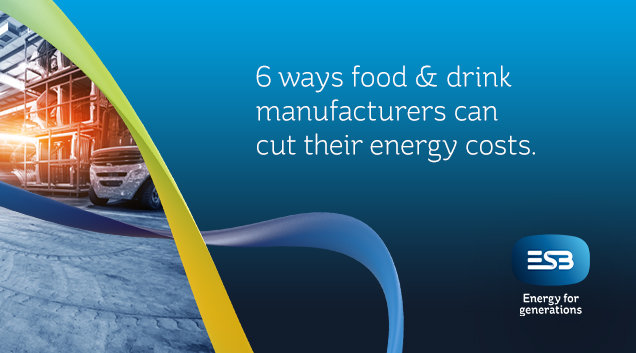
Rising energy prices have left many food and drink manufacturers vulnerable and exposed to market fluctuations out of their control. With energy costs accounting for an ever-increasing percentage of ongoing operational expenditure for manufacturers, guaranteeing security-of-supply to a clean, reliable source of energy is paramount. The food and drink sector, like many other sectors, also face a significant challenge to decarbonise operations.
A recent report published by FoodDrinkEurope states that food production from farm-to-fork represents 30% of total carbon emissions in the EU. The decarbonisation of this sector presents a significant opportunity to meet the EU's carbon neutrality targets.
So how can food and drink manufacturers exert more control on their energy supply and reduce their carbon emissions? And what benefits does this yield in the long term have on their bottom line? It is practically a given that if you can fix your operating costs, you can drive efficiencies in your production that will yield improved margins. The key question remains: how do you do this in a sustainable fashion?
A primary means of stabilising long-term fixed energy pricing would be through onsite generation which comes in many forms and the type of generation you opt for will be heavily dependent upon the processes onsite. For example, one site might have a high electrical demand; another might have a high steam demand; whilst a third might have a high heat demand.
In all these scenarios, a solution-based approach is what is required as there is no silver bullet that will fix everything. Whether it’s a single technology-type, or a combination of various technologies; the correct solution can greatly reduce a manufacturing plant's demand for energy, therefore saving on energy costs as well as cutting carbon emissions.
When ABP Food Group, the UK and Ireland's largest beef processor, needed an innovative energy partner to reduce energy usage and cut carbon emissions at two of its Irish plants, ESB's Smart Energy Services were able to provide them with a solution that could deliver a projected 66% reduction in energy usage and a projected 80% reduction in carbon emissions once all work is complete.
Energy-efficiency measures such as 1. Smart LED Lighting upgrades; 2: Heat Pumps and 3: Process Improvement (i.e. optimising energy usage through the use of an energy management hub) are measures that can be implemented that have a direct impact on carbon and cost savings.
4. Solar-PV, 5. Battery Storage, and 6. Combined Heat and Power units are the core onsite generation technologies that can help large energy users to reduce their energy demand and accelerate their transition to a low carbon future.
How ESB's Smart Energy Services can help
ESB's Smart Energy Services operate a €75m Decarbonisation Fund so that large energy users can reduce their carbon footprint while making energy cost savings. ESB's Smart Energy Services build, finance, project-manage, and operate the asset for the asset’s lifecycle, selling the energy or heat back to you on a long-term Power Purchase Agreement. This not only de-risks the project from a capital and O&M perspective for you; it helps jumpstart your organisations' journey to net-zero emissions without having a detrimental impact on business-critical operations.
Our range of funded and non-funded solutions make financing large-scale projects easy and affordable, while our expertise and technology ensure your organisation can dramatically reduce its energy costs and carbon emission.
To learn more about ESB's Smart Energy Services visit www.esb.ie/smartenergy
